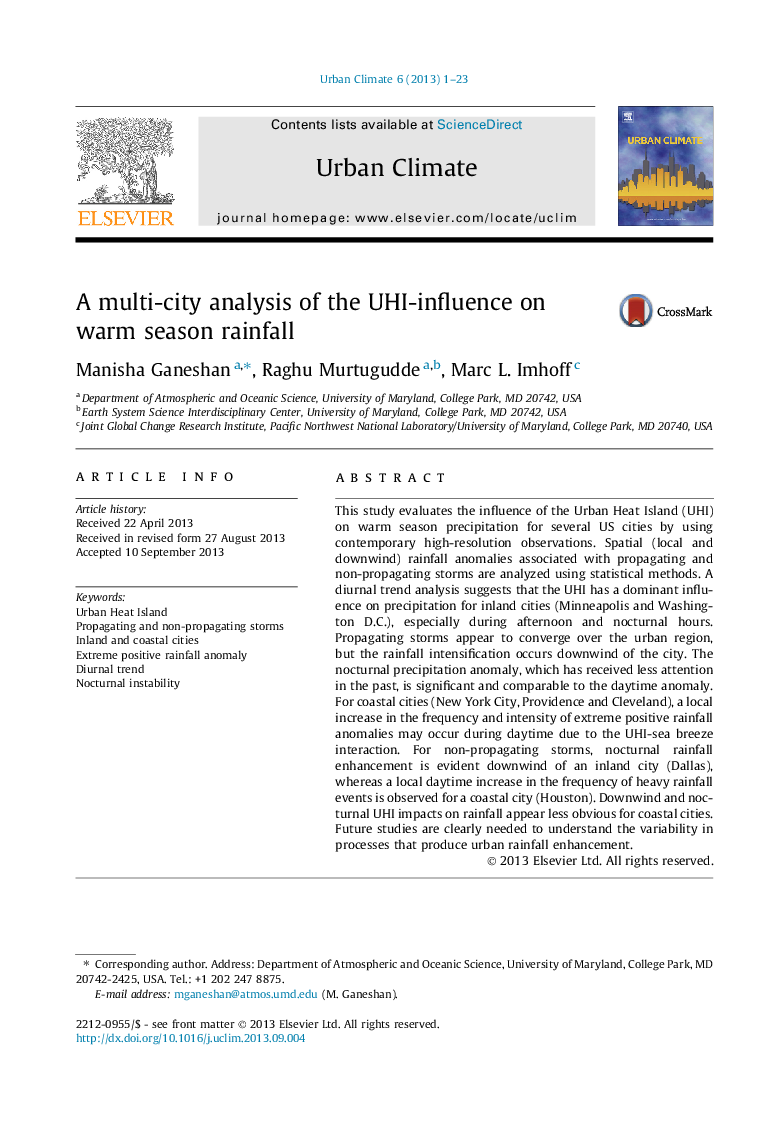| Article ID | Journal | Published Year | Pages | File Type |
|---|---|---|---|---|
| 143794 | Urban Climate | 2013 | 23 Pages |
•The UHI-influence is dominant for propagating thunderstorms over inland cities.•Rainfall anomalies peak during the afternoon as well as nocturnal hours.•For coastal urban areas, extreme rainfall anomalies are common during the daytime.•Inland and coastal UHI-impacts show similar variability for non-propagating storms.•The urban nocturnal instability and UHI-sea breeze impacts need further research.
This study evaluates the influence of the Urban Heat Island (UHI) on warm season precipitation for several US cities by using contemporary high-resolution observations. Spatial (local and downwind) rainfall anomalies associated with propagating and non-propagating storms are analyzed using statistical methods. A diurnal trend analysis suggests that the UHI has a dominant influence on precipitation for inland cities (Minneapolis and Washington D.C.), especially during afternoon and nocturnal hours. Propagating storms appear to converge over the urban region, but the rainfall intensification occurs downwind of the city. The nocturnal precipitation anomaly, which has received less attention in the past, is significant and comparable to the daytime anomaly. For coastal cities (New York City, Providence and Cleveland), a local increase in the frequency and intensity of extreme positive rainfall anomalies may occur during daytime due to the UHI-sea breeze interaction. For non-propagating storms, nocturnal rainfall enhancement is evident downwind of an inland city (Dallas), whereas a local daytime increase in the frequency of heavy rainfall events is observed for a coastal city (Houston). Downwind and nocturnal UHI impacts on rainfall appear less obvious for coastal cities. Future studies are clearly needed to understand the variability in processes that produce urban rainfall enhancement.
